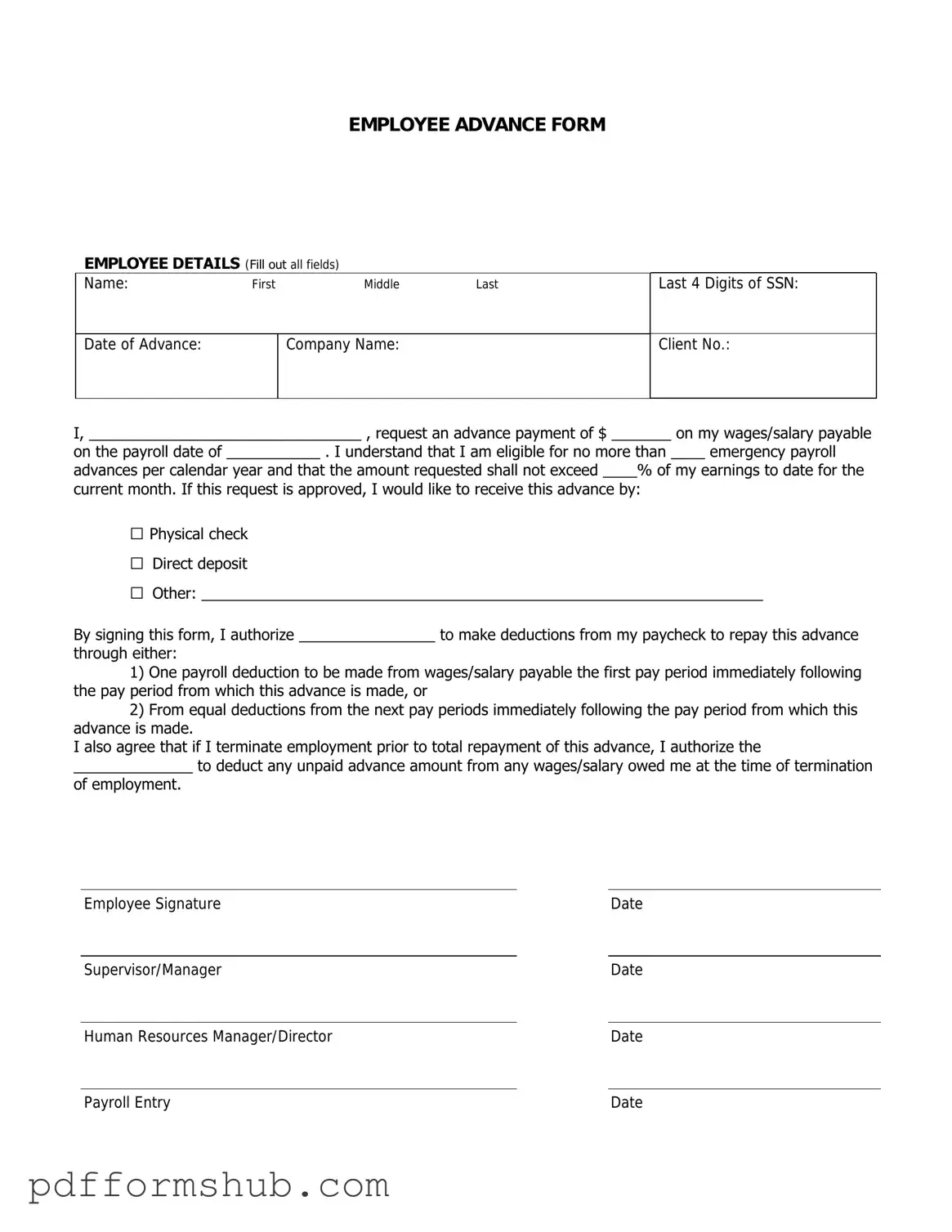The Employee Advance form serves as a crucial tool in the workplace, allowing employees to request financial assistance from their employer for various purposes. This form typically includes sections for the employee's personal information, the amount requested, and the reason for the advance. It may also outline repayment terms, ensuring that both parties understand the expectations surrounding the advance. By providing clear guidelines, the form helps maintain transparency and accountability within the employer-employee relationship. Employers can use this form to assess the legitimacy of requests and manage their financial resources effectively. Additionally, the Employee Advance form can foster a supportive work environment by offering employees a means to address unexpected financial needs without undue stress. Overall, it plays a significant role in promoting employee well-being while safeguarding the interests of the organization.
